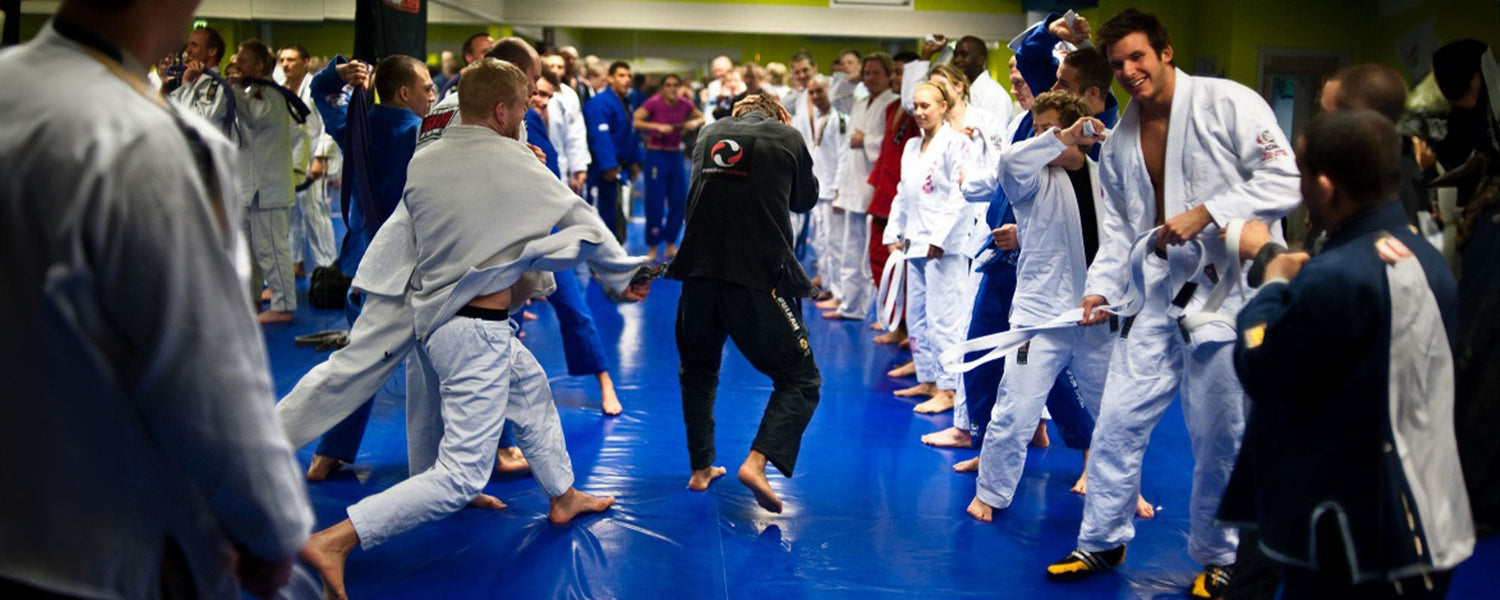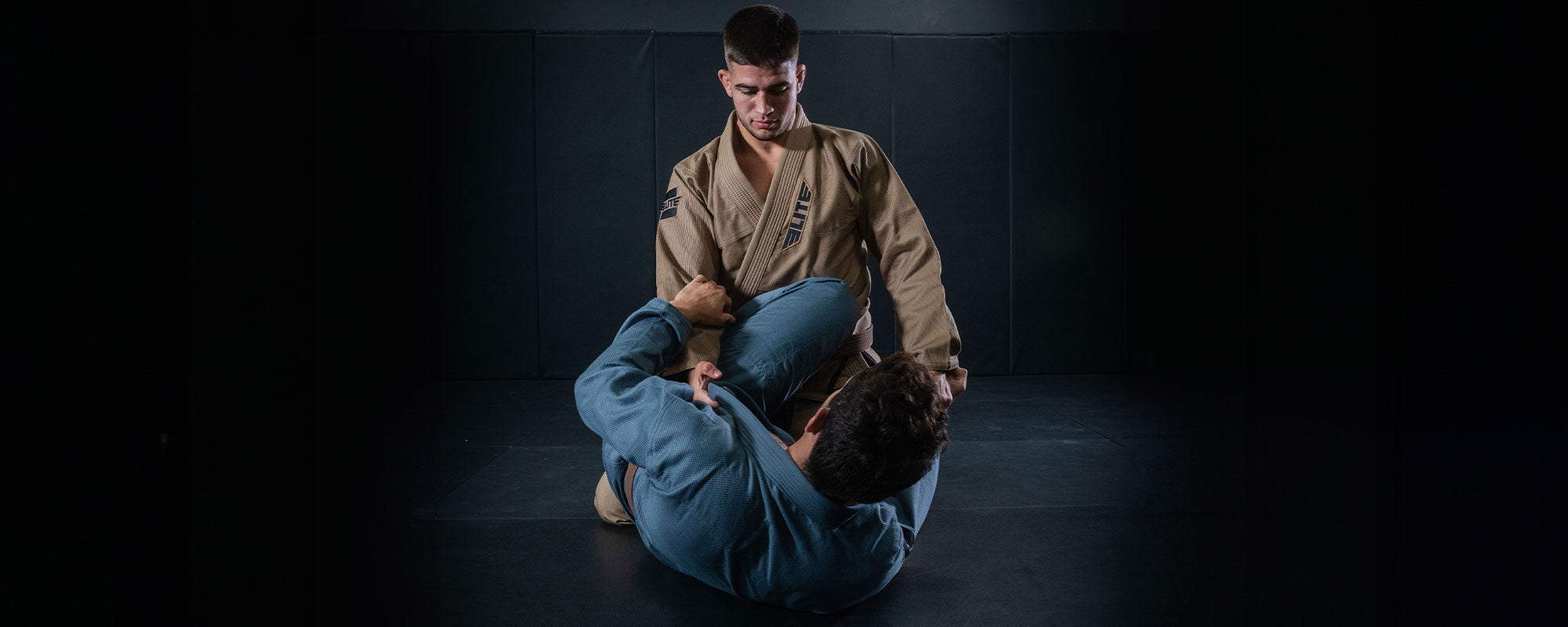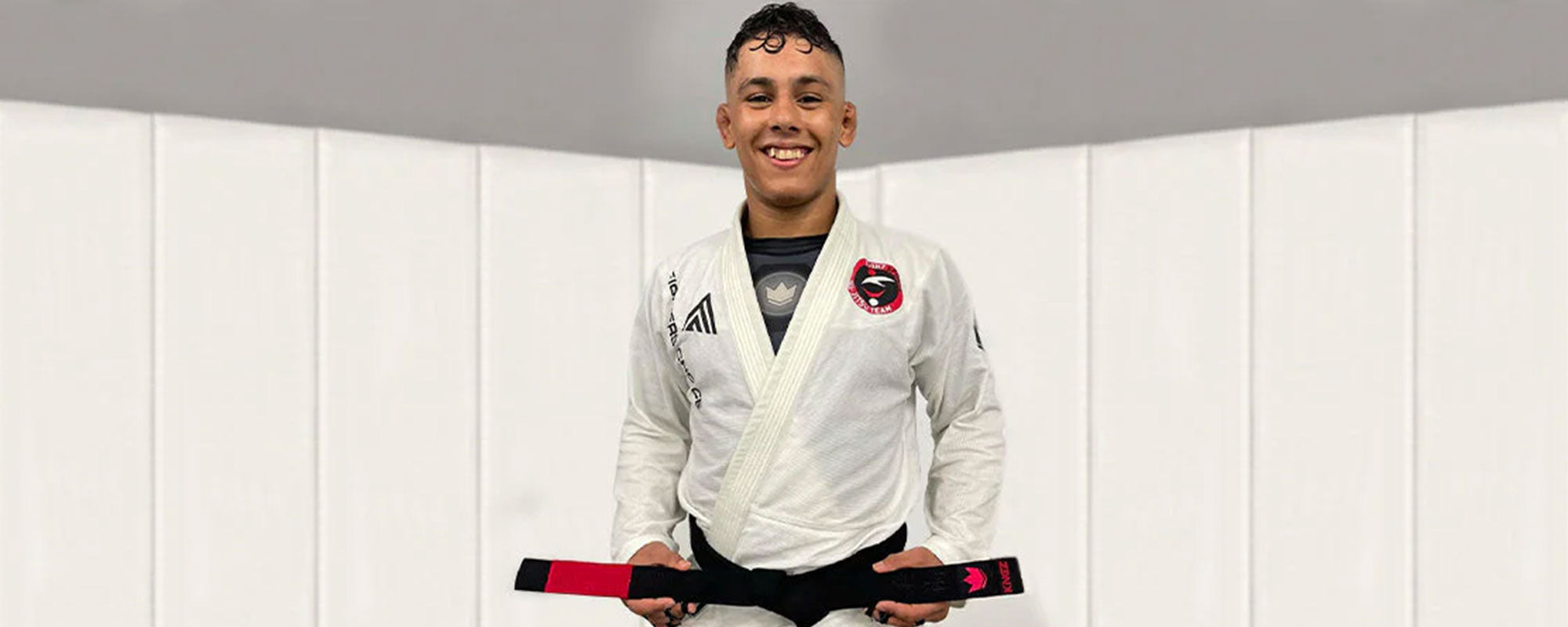Table of content
Being promoted is a major moment in the life of any BJJ student. It is a reward after long and hard hours of blood, sweat, and effort. The belt is a symbolic recognition of the efforts and hard work of jiu-jitsu practitioners. As the saying goes, the one who feels appreciated always does more than expected. It gives fighters a sense of both recognition and accomplishment. But it takes time to complete the BJJ gauntlet.
The BJJ gauntlet or belt whipping is a tradition after a belt promotion where team members use their belts to whip the promoted. The students form an arc with their bodies on the opposite edge of their mat. The person who has been promoted walks slowly through the gauntlet while their fellow teammates wear belts and "whip" them on the back. The BJJ gauntlet is a part of jiu-jitsu culture.
1. How is the Belt Whipping Technique in BJJ Called?
In English, the ritual of whipping the belts in BJJ is called "the gauntlet." The term they use to describe the gauntlet belt in Brazil is " Corredor Polones," which translates to Polish corridor or corridor.
2. How Does the Belt Gauntlet Work?
The belt gauntlet operates by having the entire gym form a line divided into two sections with an alleyway at the center. Anyone promoted to a new belt will begin running around the alleyway, getting hit with belts from the other people forming the line. Most of the time, they'll focus on hitting the back of the promoted player.
Over time, it became widely accepted that this procedure could be extremely violent; some gyms even banned the belt gauntlet altogether.
The issue is that the ones doing the whipping may be overzealous and who too often or with too much force. It doesn’t help that the promoted person must go through the gauntlet every time, resulting in being subjected to more beatings.
Therefore, you'll observe that in the current world of BJJ, there are fewer and fewer gyms that allow belt gauntlets. Many gyms are beginning to end the practice to ensure that the gym members aren't injured.
Additionally, many specialists in the field of martial arts have claimed that the gauntlet serves no purpose since getting a new belt shouldn't be a cause of violence and fear.
It should be noted that many gyms do not require students to be whipped, as it's typically an optional activity.
3. Who Invented is Belt Whipping as a Part Of BJJ?
It is widely believed that the ritual of belt whipping in BJJ was first used in Brazil. There are several BJJ black belts from older schools like Chris Haueter, who is credited with the idea of whipping belts. Haueter recounts how the practice began during the first quarter of the 1990s at the Machado brother's school. Haueter oversaw classes while the Machado brothers were shooting a film.
Haueters had just returned from his military training and thought that the gym required a hazing-type ritual to foster a sense of friendship, trust, and celebration with a pinch of sensation. Haueter acknowledged that the idea was stupid and got out of control over time.
4. Where Did the Belt Gauntlet First Start?
Around 1990, Chris Haueter, a member of the Machado Jiu-Jitsu Academy located in California, came up with the ritual together with twelve pioneers who achieved the rank of BJJ black belt outside of Brazil.
Haueter has stated that the practice was influenced by his time in the military. This is a reason why the ritual grew out of control. As it gained more popularity, those who chose to participate had a higher chance of being out of control or injured. This contradicts the beliefs of most BJJ fighters from Brazil who believe that the gauntlet is a long-standing tradition that dates back to the beginning of BJJ itself. But most old gyms in Brazil don't practice this at all.
If anyone asserts that the gauntlet ritual has been a BJJ tradition for the entire time that BJJ has existed, that is not true.
5. Why Not Take on the BJJ Gauntlet?
The BJJ gauntlet can be a painful experience due to people being distracted and forgetting that they could harm someone. A head injury caused by a swing from a belt could be risky. A few well-known BJJ instructors spoke out against this practice, including Caio Terra, who expressed his views through social media.
"Tonight, we had belt promotions. For this first time, we did not run an entire gauntlet.”
In the modern era, the practice of hazing shouldn’t be condoned or even have it imposed on those who do not want to engage in hazing.
If someone wants to run the challenge, they should have the right to refuse.
6. The Belt Whipping Guidelines in BJJ
here are rules and regulations in place to prevent serious injuries due to belt whipping.
The team members form two lines, with a middle line for the promoted person to walk through the gauntlet.
The promoted person must walk back and forth only one time.
Team members are only permitted to strike the back and upper body.
Team members are not allowed to strike the face, head, or stomach.
The promoted person must cover their head with a jacket for protection.
Participants are permitted to wear their BJJ belts.
7. ''Kumite'' for BJJ
Kumite (sparring) following a belt promotion is an excellent way to test someone's skills. The promoted person must fight every person at the academy for a specific time and number of rounds. The rank of the promoted person determines how intense the sparring experience will be.
Additionally, during sparring, the promoted person must demonstrate an awareness of the techniques appropriate for their belt level. This training environment should promote friendship, mental stimulation, and bonds between participants.
8. Should Belt Whipping in BJJ Be Abolished?
Grapplers like Caio Terra believe that belt whipping has nothing to do with BJJ and must be taken out of the picture.
Is it true that belt whipping in BJJ is brutal, violent, and perhaps unnecessary? Perhaps it is! But jiu-jitsu clubs practice belt whipping to promote camaraderie among the students.
Belt whipping itself is not malicious, only made that way if students are intentionally trying to harm their fellow teammates. However, belt whipping isn't something that can be practiced in all BJJ training facilities, only a few specific schools.
Many don't approve of belt whipping, but it is a practice that will not easily disappear from BJJ.
9. Conclusion
Refusing to be whipped during a promotion doesn't mean you're any less of a BJJ fighter. Do not, under any circumstances, give in to peer pressure. Students must be able to stand their ground as they remind others that true jiu-jitsu is about honor, sportsmanship, and doing what is right.
Jiu-jitsu students come from diverse backgrounds and age groups. It's not a good sign for a 20-year-old to feel comfortable hitting someone twice their age. Any black belt instructor must not let harmful behavior like harmful belt whipping prevail. The BJJ gauntlet can be a great honorary ceremony to celebrate a promotion, so long as it is mediated properly.
Photo Credit: @martialartslab













Leave a comment
This site is protected by hCaptcha and the hCaptcha Privacy Policy and Terms of Service apply.